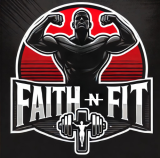Learn whether the dumbbell or barbell Romanian deadlift activates more glute and hamstring muscle so you can choose the best tool for hypertrophy—starting next workout. The Romanian deadlift (RDL) is one of the most effective posterior chain exercises. It targets the glutes, hamstrings, and spinal stabilizers using a hip hinge movement that builds strength, size, and athletic function. But when it comes to execution, there’s a debate: Dumbbell RDL vs Barbell RDL—which is better for building muscle?
Let’s break down the science, biomechanics, and practical application of both to help you pick the right variation for your goals.
What Is a Romanian Deadlift (RDL)?
An RDL is a hinge-based movement where the hips move back while maintaining a flat spine. Unlike a conventional deadlift, the RDL starts from the top and emphasizes a stretch-loaded eccentric contraction of the hamstrings and glutes.
RDLs build:
- Posterior chain strength
- Hip stability
- Glute and hamstring hypertrophy
- Low back endurance
🧮 Muscle math: The glutes and hamstrings work hardest when under stretch tension—which is exactly what a good RDL delivers.
Dumbbell RDL vs Barbell RDL: What’s the Difference?
🏋️♂️ Barbell RDL
- More total load capacity
- Harder to stabilize
- Slightly more lower back engagement
- Ideal for strength and size progression
💪 Dumbbell RDL
- Greater range of motion
- Easier on wrists and shoulders
- More glute and hamstring isolation
- Better for beginners or hypertrophy focus
📊 EMG data shows similar hamstring activation between the two, but dumbbells allow deeper stretch, which may enhance glute fiber recruitment.
When to Use Dumbbell RDLs
✅ 1. Maximum Stretch and Glute Targeting
With dumbbells, you can move more freely around your legs and lower deeper, lengthening the hamstrings and engaging the glutes through a greater range of motion.
✅ 2. Improved Form and Stability
Most lifters find dumbbell RDLs easier to learn and execute with strict form. The independent hand position helps reduce rounding and shift focus to the hips.
✅ 3. Accessory Work and Volume Sets
Great for higher-rep hypertrophy sets (10–15 reps), finishers, or unilateral variations (e.g., single-leg dumbbell RDLs).
🔁 Example: 3 sets of 12–15 reps after squats or hip thrusts to fatigue glutes and hamstrings.
When to Use Barbell RDLs
✅ 1. Progressive Overload
Barbells allow you to lift heavier over time, essential for long-term glute and hamstring growth. They also make tracking progress easier.
✅ 2. Posterior Chain Strength
You’ll train not only glutes and hamstrings but also erector spinae, traps, and grip strength due to the heavier load and bar path.
✅ 3. Compound Lower-Body Programs
Perfect in power or strength-focused programs where RDLs supplement squats or deadlifts.
🔁 Example: 4 sets of 6–8 reps at 70–80% 1RM to build size and strength.
Safety and Technique Comparison
| Feature | Dumbbell RDL | Barbell RDL |
|---|---|---|
| Range of Motion | ✅ Greater | Slightly limited |
| Load Capacity | ❌ Lower | ✅ Higher |
| Glute Isolation | ✅ Better | Moderate |
| Hamstring Stretch | ✅ Deep | Moderate |
| Spinal Load | Lower | ✅ Higher (more core needed) |
| Learning Curve | ✅ Easier | More advanced |
⚠️ Safety tip: Keep your spine neutral, core braced, and hips driving back—not down. Avoid turning the RDL into a squat.
Dumbbell RDL vs Barbell RDL for Muscle Growth
Both are effective. But for glute-focused hypertrophy, the dumbbell version may have a slight edge due to:
- Increased range of motion
- Better glute isolation
- Lower spinal fatigue = more volume
For overall posterior chain mass and strength, barbell RDLs win for their load potential.
🏆 Best strategy: Use both:
- Barbell RDLs for heavy sets of 6–8 reps
- Dumbbell RDLs for accessory work at 10–15 reps
Key Takeaway
The best RDL is the one that fits your goal.
Use barbell RDLs when you want to lift heavy and build overall strength. Use dumbbell RDLs to isolate your glutes and hamstrings with better form and flexibility. Combine both in your program for a complete posterior chain attack.
Start by programming dumbbell RDLs into your hypertrophy blocks and barbell RDLs into your strength blocks—and track the glute growth week over week.
Subscribe now and get a 14-day free trial workout app for iPhone users.



